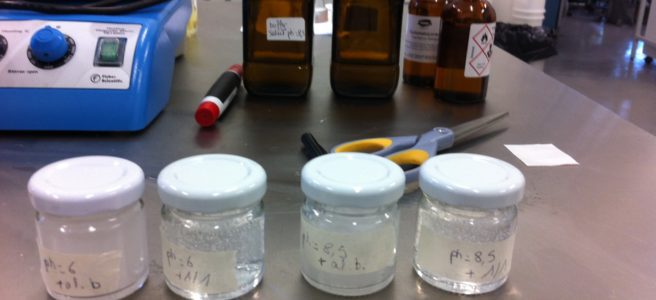In order to study a cultural object, conservators and curators can perform non-invasive analyses using scientific techniques that will allow them to better understand the structural elements of the object. Laboratories are equipped to do in-depth research on works and cultural objects. Thus, several scientific techniques are at our disposal.J
Infrared radiography
Infrared reflectography allows the detection of restorations that are not necessarily detectable with UV because they are too old. It also allows to see preparatory drawings, hidden inscriptions, changes in composition. The infrared reflectography camera is very interesting because the result of the observation is immediately visible on a video screen, which is not the case with photography. But the reflectography remains in the upper layers of the work. I work with Jean-Gabriel Aubert, radiographer/ photographer at Arc'Antique in Nantes. X-raying, a non-destructive technique, reveals the details: shape, structure, decoration, manufacturing technique, former restoration and state of conservation. https://grand-patrimoine.loire-atlantique.fr/jcms/les-services/arc-antique/laboratoire-arc-antique-fr-p2_145023
UltraViolet X-ray
Ultraviolet light can detect relatively recent restorations, which for a restorer can represent more than a century. Under the effect of UV radiation, the restorations appear as opaque spots.
This example consists in making visible the surface repaints, present on top of the varnish. The lighting used for this purpose is provided by two black light strips. It excites the fluorescence of the materials constituting the varnish, thus making the repainted areas appear as opaque spots.
X-rayradiography
This technique allows to go even further and to study all the layers of the work. Radiography records the image formed by X-rays that are more or less absorbed when they pass through an object. We thus obtain both a representation of the internal constitution (structure, armatures, assemblies, ...) and the skin of the paintings or objects studied (gaps in old polychromy covered later, superimposed compositions, ...)
Low pressure heating table
Equipped with an adjustable heat plate (thermostatic regulation) and a low pressure suction system (homogeneous and regular) with variator, the table is used for the restoration of the canvas support of painted works (treatment of deformations, synthetic or traditional linings) as well as for the refixing of the various constituent layers (preparation layer, pictorial layer) thanks to the control of the penetration of the adhesives.
I was able to meet with Professor Chauvet from the University of Nantes to test paintings with a multispectral camera. We were able to observe the underlying layers, the lines and the preparatory sketches.
More info and sources:
www.culture.gouv.fr/culture/conservation/fr/methodes/http://www.culture.gouv.fr/culture/conservation/fr/methodes/rif.htm
http://www.arcantique.org
